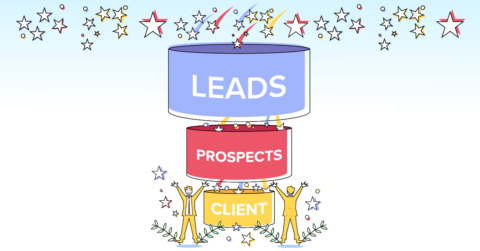
Web Design For Nonprofits: 5 Tips
11/16/23
Digital Marketing
The significance of a compelling online presence cannot be overstated for nonprofits seeking to amplify their impact. A well-designed website is not just about aesthetics. It also serves as a powerful tool for communicating your mission, engaging supporters, and driving meaningful action. That’s why website design for nonprofits is so essential.
Today we will share specific reasons why website design should be a priority for nonprofits. We also cover five tips you can start implementing immediately for a better online experience for donors.
Why Web Design for Nonprofits Is Important
It’s easy to think that web design shouldn’t be a priority for everyone. For-profit businesses, yes. But what can a nonprofit organization stand to gain?
The fact is, for any organization, company or business that has an online presence, web design is crucial. Your website is often the first impression that somebody has of you. Fail here, and every other goal you have becomes more difficult. Succeed, and everything becomes easier.
Here are just a few effects of a great web design for a nonprofit:
- Builds credibility. A well-structured and visually appealing website is a given for professional nonprofits. Neglect your web design, and people will find it difficult to take your organization seriously.
- Instills confidence. Who wants to donate to an organization that neglects their own website? The first step to building a relationship with a potential donor is a positive online interaction with your brand. A great site is the first step.
- Drives more donations. The above two reasons combine to drive the third one: more donations. Let’s be honest – a nonprofit is dependent on the donations it receives from donors. A poor website that is difficult to use (and worse to look at) simply can’t maximize the donations it receives.
Clearly, you should take web design seriously as a nonprofit. Now that we know why, let’s cover five ways to maximize the effect of your website.
5 Web Design Tips For Nonprofits
1) Prioritize User-Centric Navigation
Nobody wants to spend time on a website that is difficult to use. And the less time people are on your website, the less likely they are to actually donate. So – how do you create a website based on user-centric navigation? The golden rule is to organize your website content in an intuitive way. Consider the user journey a visitor might take, and ensure that all essential information is easily accessible. You might also consider these elements:
- Clear navigation menus
- Concise but informative headings
- Lack of clutter
User-centric design fosters engagement and ensures that visitors find what they’re looking for effortlessly.
2) Optimize Calls-to-Action (CTA’s)
Good CTA’s are a direct part of user-centric navigation. Done well, they guide visitors in the way you want them to move throughout your site, turning their interest into tangible actions. Because of that, they are an essential ingredient to good web design for nonprofits.
For effective CTA’s, clearly define the actions you want visitors to take. This might include making a donation, subscribing to your newsletter, or even signing up for a volunteering opportunity. You should also place your CTA’s in strategic places so they grab attention. The copywriting you use for them is also important. Use compelling language that inspires action and communicates the urgency of their action (whatever it may be).
3) Tell Compelling Stories Through Visuals
We’ve talked before about the power of storytelling. People are naturally more convinced by a message backed by a story. Perfect the art of storytelling, and the sky’s the limit for how many donations you can drive.
Still, if you are going to implement storytelling in a way that doesn’t crowd your web design, visuals are essential. Visual storytelling not only captures attention but leaves a lasting impression, turning visitors into advocates for your mission. As for how you do this? Take advantage of the power of compelling images, infographics, and videos. Showcase the real impact of your work, humanize your cause, and create an emotional connection with your audience. These things are more effective at storytelling than words alone, and should be used to their maximum potential.
4) Make Things Look Good On Mobile
You need to optimize for mobile. There’s simply no way around this. With a growing number of users accessing websites via mobile devices, optimizing your site for various screen sizes is imperative. As WebFX states, over 50% of all traffic is generated from mobile phones. Neglect this reality and your nonprofit will suffer because of it.
Responsive design ensures that your content remains visually appealing and easily navigable across all devices. The obvious effect of this is a better user experience, which keeps potential donors coming back to your website. In addition, mobile optimization positively impacts search engine rankings, which makes it easier for new people to discover your nonprofit online.
5) Design With Inclusivity In Mind
Not all of your site visitors will come from the same demographic. The fact is, you have all sorts of people interacting with your website. To fully take this into account, inclusive web design is a must.
What this means is ensuring that your website is accessible to users of all abilities. Adhere to accessibility standards by providing alternative text for images, using legible fonts, and incorporating high color contrast. A more inclusive design not only broadens your reach but also aligns with the values of diversity and equality. This will ensure that your web design is welcome to everyone. Plus, because inclusivity is not necessarily top-of-mind for all nonprofits, this step can set you above the pack in the minds of donors.
…
Are you an enterprise, nonprofit or small business looking for help on your website? Give us a shout! We provide a free consultation. Email us at info@lughstudio.com or call us at (718) 855-1919!









